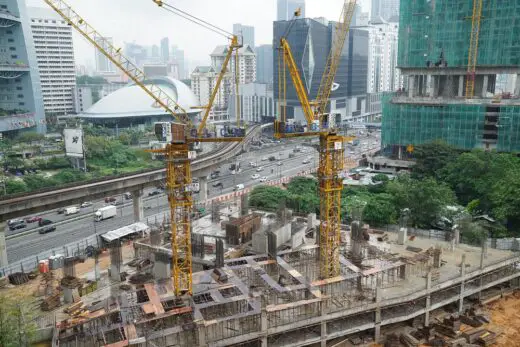Cement industry: Challenges and sustainability issues, Building site tips, Property contractor advice
Cement Industry: Challenges and Sustainability Issues
16 Aug 2022
The cement industry is one of the world’s oldest and most important industries. It is responsible for the production of a critical material used in construction, infrastructure, and other applications. However, the industry faces significant challenges relating to its environmental impact. In this article, we explore some of the key sustainability issues facing the cement industry and what steps are being taken to address them.
The Cement Industry: An Overview
The cement industry is a vital part of the construction sector. It is one of the largest industries in the world, with over 3,000 plants producing more than 4 billion tons of cement each year.
The cement industry has come under scrutiny in recent years for its impact on the environment. The production of cement involves a number of process steps, including quarrying, raw material preparation, kiln operations, and cooling and storage. Each of these steps can have significant environmental impacts.
Quarrying operations can generate dust and noise pollution, while the transportation of raw materials and finished products can lead to traffic congestion and emissions. The burning of fossil fuels in cement kilns is a major source of greenhouse gas emissions, accounting for approximately 2% of global emissions.
The cement industry is working to reduce its environmental impact through a number of initiatives. These include investing in new technologies to improve efficiency and minimize waste as well as supporting the development and use of alternative fuels.
The industry has also set voluntary targets to reduce its emissions, and many companies are reporting their progress against these targets.
The Impact of the Cement Industry on the Environment
Cement is one of the most widely used construction materials in the world. It is essential for the construction of homes, office buildings, bridges, and other infrastructure. The cement industry is a major contributor to greenhouse gas emissions, accounting for approximately 5% of global emissions. The production of cement involves the release of carbon dioxide gas, which is a major contributor to climate change.
The cement industry is facing a number of challenges in terms of sustainability. The most significant challenge is reducing its greenhouse gas emissions. The cement industry has set a goal of reducing its emissions by 20% by 2050. In order to achieve this goal, the industry must invest in new technologies and processes that will reduce emissions. The industry is also working to increase its use of alternative fuels, such as biomass, which can help to reduce emissions.
In addition to its environmental impact, the cement industry is also facing economic challenges. The global market for cement is expected to slow in the coming years due to overcapacity and declining demand in some key markets, such as China and India. This could lead to consolidation within the industry and reduced profitability. The industry must adapt to these changing conditions and find ways to remain competitive.
Sustainability Issues in the Cement Industry
There are a number of ways in which the cement industry is working towards sustainability. One way is by investing in research and development in order to find more efficient ways of production. Additionally, many companies are now using alternative fuels such as waste materials from other industries, which helps to reduce emissions.
Despite these efforts, there are still many challenges facing the cement industry when it comes to sustainability. One major challenge is the increasing demand for cement as the world population grows and urbanisation increases. This means that even if emissions are reduced, the overall output of greenhouse gases from the cement industry is likely to increase unless there is a significant decrease in demand.
Another challenge is that of regulatory pressure. Governments are increasingly imposing stricter environmental regulations on industries, which the cement industry must comply with. This can be costly and may lead to higher prices for consumers.
The challenges facing the cement industry are significant, but it is important to remember that the industry is also an important part of the solution to climate change. The production of cement can be part of a sustainable future if the industry makes the necessary changes.
The Future of the Cement Industry
The industry has already made some progress in these areas, but further efforts are needed to meet the targets set by the Paris Agreement on climate change. The cement sector has also been working to improve its water efficiency, but more needs to be done to meet the target of a 20% reduction in water use by 2030.
There is also a need to reduce the amount of waste produced by the cement industry. Currently, around 50% of all cement kiln dust (CKD) is sent to landfill. This not only creates environmental problems, but also adds to the cost of production.
The cement industry is aware of these challenges and is taking steps to address them. However, more needs to be done if the sector is to achieve its full potential in terms of sustainability.
Comments on this Cement Industry: Challenges and Sustainability Issues projects are welcome.
Construction
Construction Safety Posts
Construction Site Equipment Every Contractor Needs

Why Construction Safety Is Important
Best practices to improve construction site safety
Safety rules and responsibilities for construction sites
Building Design
Architecture
Comments / photos for the Cement Industry: Challenges and Sustainability Issues page welcome






